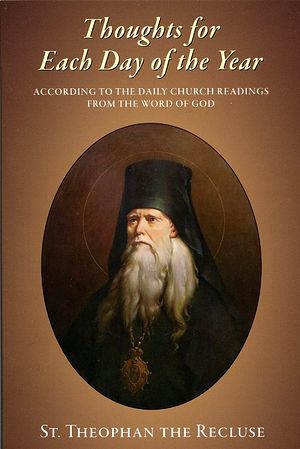

| Previous day | Next day |
| Old Style
March 1
|
Monday |
New Style
March 14
|
|
1st Week of Great Lent.
Tone 8.
Великий пост. |
Monastic rule: total abstinence from food.
|
![]() Martyr Eudocia of Heliopolis (160-170).
Martyr Eudocia of Heliopolis (160-170).
Martyr Antonina of Nicaea (3rd c.-4th c.). St. Martyrius, founder of Zelenets Monastery (Novgorod) (1603).
New Martyr Abbess Antonina of Kizliar (1924). New Hieromartyr Anthony (Korzh), hierodeacon of Kiziltash Monastery (Crimea) (1938).
Virgin Domnina, ascetic, near Cyrrhus (450-460). St. Albinus, bishop of Angers (550). St. David of Wales, bishop (6th c.). St. Suitbert (Swidbert), bishop in southern Westphalia and monastic founder on the Rhine River (713). St. Leo-Luke of Corleone, Sicily (ca. 900). St. Agapius of Kolitsou Skete of Vatopedi, Mt. Athos, and his four companions (13th c.). New Martyr Paraskevas of Trebizond (1659).
Thoughts for Each Day of the Year
According to the Daily Church Readings from the Word of God
By St. Theophan the Recluse

Monday (1st Week of Lent).
“Lent has come, O mother of chastity.” What was the time before this day? A time of fornication.[1] The soul fornicated with all that struck its eye as pleasant—both with people and with things: more fully, with sinful passions. Everyone has his passion which he pleases in all he does. It is time to put an end to this. May each of you comprehend your Delilah, who binds you and hands you over to evil enemies, and abandon her. Then you will be given more than Samson: not only shall your hair grow, but so also shall good thoughts; and not only shall your strength return, but so also your strength of will. Your eyes shall also open, your mind shall have sight and it shall see the Lord, yourself, and everything around you in the proper light. This is the favourable time! This is the day of salvation!
[1] “A time of fornication.” Fornication here has a double meaning in Russian, both of fornication and roaming.


